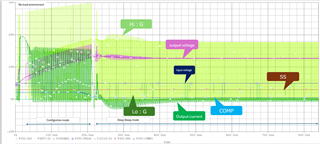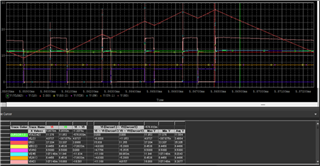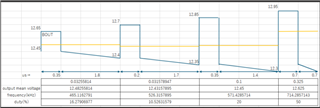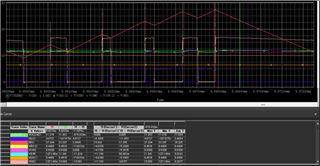Hello
I would like to ask three questions regarding the specifications of the LM5152-Q1.
Q1.
Please tell me about the configuration mode of LM5152-Q1.
I checked the input voltage, output voltage, high-side and low-side gate terminal voltage, etc.
in config mode with pspice for TI when there is no load.
There is a description of configuration in chapter 9.3 of the datasheet.
I didn't understand the load conditions.
Is it the same for high load and no load?
If it's not common, do you have the data sheet for no load or high load?
If there is no description of high load, please provide details.

Q2.
When operating with an input voltage of 6.5V, an output voltage of 12.5V, and a constant current load of 9A,
the SW frequency of the high-side and low-side gate voltages did not reach the set value of 488.8kHz.
There are times when it becomes 465kHz, 526kHz, 571kHz.
Can the frequency change like this? I would like to know the reason for this.
Q3.
Are there any restrictions on DUTY value?
red :sense current
pink:High side gate voltage
violet:Lo side gate voltage
green:VOUT



Best regards,
takahashi

